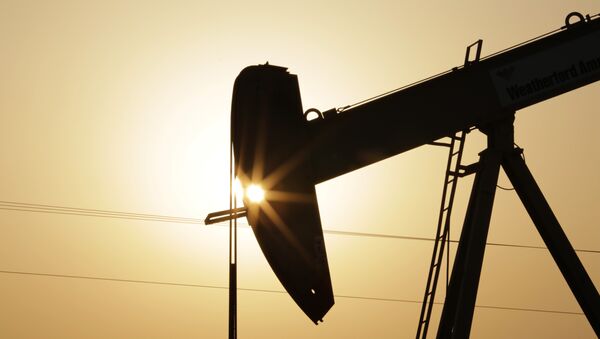The expected Doha oil freeze, potentially resulting from Sunday’s meeting of 18 oil-producing nations, would push international crude prices higher, easing pressures on budgets and monetary conditions in commodity-based economies. Among the participants listed are the world’s top petrodollar economies: Russia, Saudi Arabia, Qatar, and Venezuela, which had reached a preliminary agreement on an oil freeze almost two months ago, yet, the deal might still be off due to the Iran factor. The Islamic Republic, released from under international sanctions last year, is enjoying a renewed influx of hard currency through selling oil for first time since 2012, but is willing to be part of the deal, participating in Doha talks as well.
Among other nations joining the proposed Doha freeze are Algeria, Angola, Azerbaijan, Colombia, Ecuador, Indonesia, Iraq, Kazakhstan, Kuwait, Mexico, Nigeria, Oman, and the UAE.
The major reason for the deal to be concluded despite all the reluctance and disarray between the Doha negotiators is that in just 18 months, since November 2014, the oil-reliant economies have burnt some 20% of their total FX reserves, or roughly $315 bln in absolute numbers, according to Bloomberg analysis. Yet, as certain nations do not provide full, transparent or reliable data, the actual figures might be greater than that, but even 20% is quite impressive.
Saudi Arabia suffered the greatest blow to its FX reserves due to its currency’s peg to the dollar, having shed some $140 bln, followed by Russia, losing only $58 bln of its FX reserves, having saved money by devaluing its currency twofold. Algeria lost $40 bln of its FX reserves, followed by Libya, having spent roughly $18 bln. Other oil-dependent nations’ losses have been more modest, and only the UAE managed to increase their FX reserves during the period by adding some $8 bln.
Oil producers’ FX reserves are typically invested in US Treasuries and other haven bonds, and even such a massive petro-asset selloff over the course of the past 18 months failed to undermine bond prices in any way, explained by the sustainable influx of capital fleeing the battered emerging markets during the same period.
"We expect 2016 to be yet another painful year for most of the oil states," Abhishek Deshpande of London-based Natixis SA said.
The preliminary deal reached by Russia, Saudi Arabia, Venezuela and Qatar in February, resulted in a 30% gain in Brent crude price over the past two months. Should the broader Doha deal be reached Sunday, oil prices might add another 50% due to its major psychological significance to the market. Yet, the effect might be short-lived thereafter. As even a $60/bbl oil price would be not enough to resolve fiscal and monetary hardships in oil-producing nations, they will inevitably have to boost output again once the oil prices peak out – or reform their economies decreasing excessive reliance on commodities, which is not happening.
“There is some symbolic value in that they’re actually able to meet and discuss a real strategy for the oil market,” Jens Pedersen of Danske Bank AS said. “But short term, I don’t expect it to have any significant impact on fundamentals.”
Indeed, with oil output in Russia and Saudi Arabia near their respective record highs in the early months of this year, the accumulated global stockpiles of crude might weigh on the oil price for a while even after the deal. That said, on the supply side of the oil market, there would be still some glut lingering, whilst the actual consumption of all the excessive oil would take time. Demand side is weak, with global manufacturing faltering, mainland China GDP growth slowing down further to 6.7% in Q1 from 6.9% throughout 2015, and, after all, the cash-starved Iran might still sabotage the deal.




